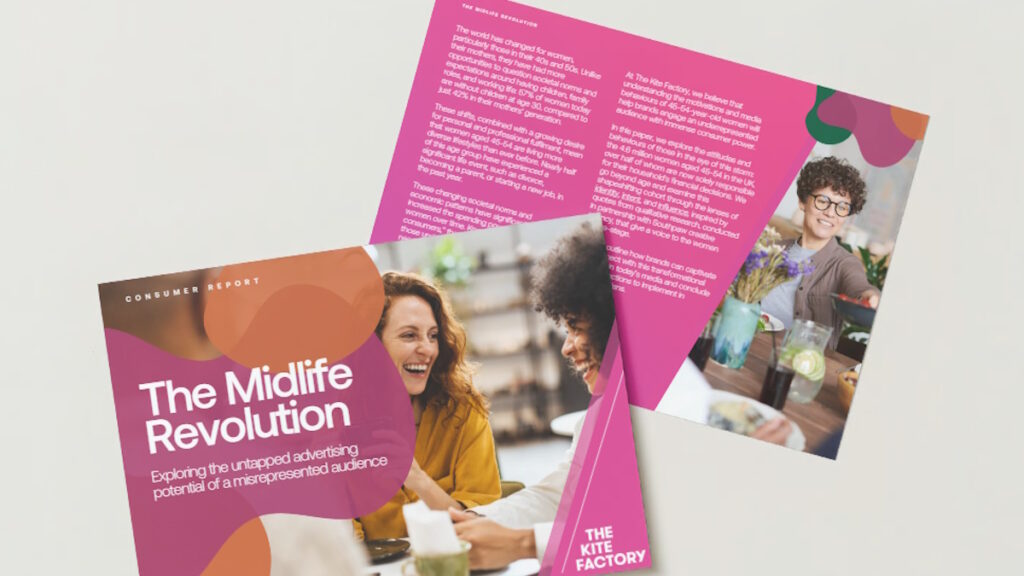Women in midlife without children are the most underrepresented in media and marketing, according to a study from media agency The Kite Factory and creative agency Southpaw.
The ‘Midlife Revolution’ report revealed that 44% of childless women aged 45-54 feel their lifestyle isn’t represented in advertising, despite them making up a quarter of women in their age category.
The study, which combines YouGov and TouchPoints data with qualitative research, found that there were significant differences in hobbies, interests, and attitudes depending on whether respondents had young children, older children, or no children.
Notably, 29% of women aged 45-54 without children say advertising helps them choose what to buy, which is 9% less than those with children under 18 and 4% less than those with adult children.
The research also found that women with children are 20% more likely to be engaged in sectors – such as cars, technology, and personal finance – which traditionally prioritise male or younger audiences in the marketing and media. On the other hand, those with children indexed highest for sports, politics, and beauty.
Women aged 45-54 are also less likely to put emphasis on “looking young,” with 9% fewer agreeing it’s important than those aged 35-44. Furthermore, they are 8% more likely than the general female population to not care what other people think of them, and 9% more likely to be willing to “dance like no one is watching.”
“This is the latest study we’ve undertaken into underrepresented audiences, and once again, the feedback is that brands could be doing more to reach and connect with more experienced audiences more effectively,” said Charley Day, Strategy Director at The Kite Factory.
“It is widely reported that women feel “invisible” over a certain age, and when advertisers bundle them together and see them all as simply caregivers, ignoring the interests and attitudes that go hand in hand with their lifestyles and life choices, they are missing out on a diverse, affluent and influential audience.”
Advertisers should also take into account how media consumption differs for women aged 45-54, favouring audio over visuals. For instance, 60% listening to radio in the background when alone and 40% saying they sometimes rely on radio for companionship – both the highest for any female cohort.
“Only 6% of midlife women feel represented in the advertisements they see [Global Web Index, 2024], indicating that brands have yet to grasp how to resonate with this dynamic audience. These women are ‘super consumers,’ commanding unprecedented economic power and representing a vast untapped market. At pivotal moments in their lives, they are reassessing their needs to achieve midlife self-actualisation,” said Niki Jones, Head of Strategy at Southpaw.
“This is a call to action for brands to delve deeper into understanding the unique nuances of this demographic. By aligning insights, tone of voice, language, imagery, and media, brands can show this powerful audience that they are seen, heard, and, most importantly, valued.”









